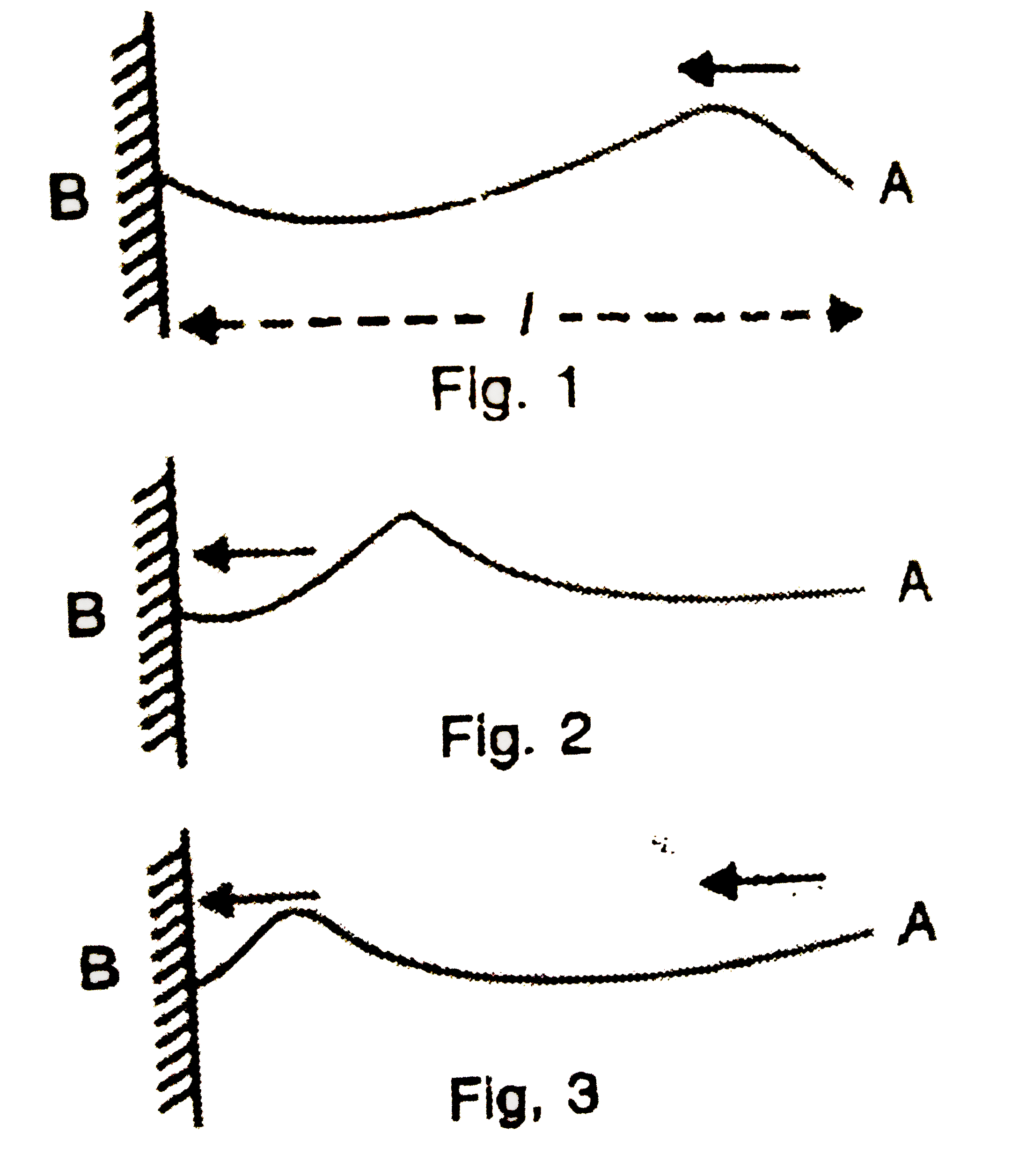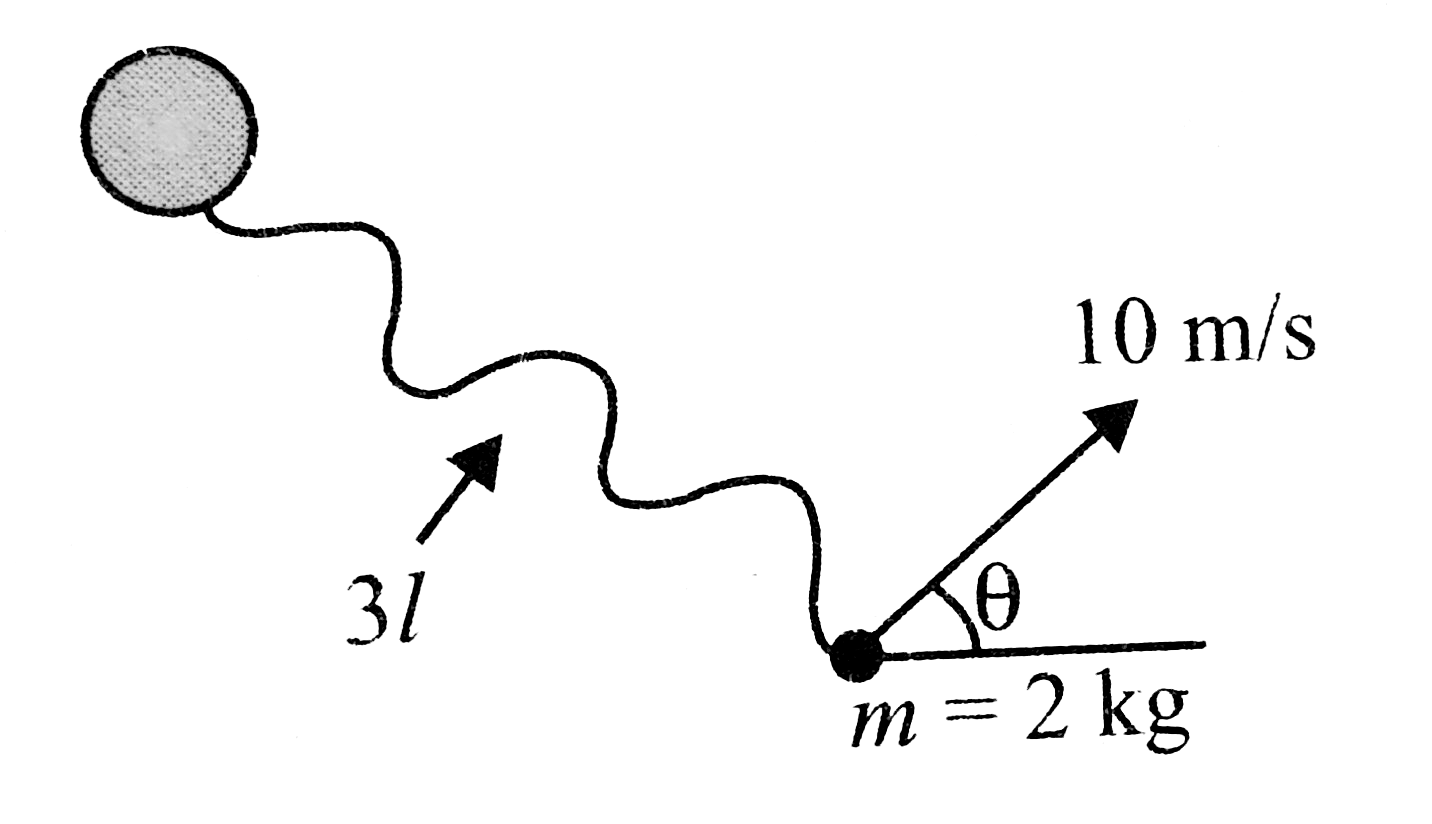In an experiment on determining the velocity of a pulse propagating through a stretched string, the stopwatch should be started and stopped at instants corresponding to the ones shown in:

Fig 1 and Fig 2
Fig 1 and Fig 3
Fig 2 and Fig 1
Fig 2 and Fig 3
The correct Answer is:B
Topper's Solved these Questions
- SOUNDBOOK - LAKHMIR SINGH & MANJIT KAURCHAPTER - SOUNDEXERCISE - NCERT
5 Videos
- SOUNDBOOK - LAKHMIR SINGH & MANJIT KAURCHAPTER - SOUNDEXERCISE - Value Based Questions
20 Videos
- SOUNDBOOK - LAKHMIR SINGH & MANJIT KAURCHAPTER - SOUNDEXERCISE - HOTS
8 Videos
- MOTION BOOK - LAKHMIR SINGH & MANJIT KAURCHAPTER - MOTION EXERCISE - NCERT BOOK QUESTIONS AND EXERCISES
3 Videos
- WORK AND ENERGYBOOK - LAKHMIR SINGH & MANJIT KAURCHAPTER - WORK AND ENERGYEXERCISE - Multiple Choice Questions
1 Videos
Similar Questions
Derive an expression for the velocity of pulse in a in stretched in string under a tension T and μ is the mass per unit length of the sting.
View SolutionDerive an expression for the velocity of pulse in a in stretched in string under a tension T and μ is the mass per unit length of the sting.
View Solution
Knowledge Check
A student lists the following precautions for the experiment on determining the velocity of a pulse propagated through a stretched string:
(A) The string should not be stretched too tight.
(B) The counting of the pilse journeys must start from zero and not from one.
(C) The string should be stretched straight in contact with the table.
(D) The amplitude of the pulse should be kept appreciably high.
The incorrect entry, in this list of precautions, is the precaution listed as:AABBCCDDWhile doing the experiment on measuring the velocity of a pulse through a stretched string, a student had to choose between a
(i) thick silk string and a thick cotton string
(ii) stop clock and a table clock.
The combination choice that he should prefer is :Asilk string and the table clockBsilk string and the stop clockCcotton string and the table clockDcotton string and the stop clock.Four students did their experiments on measuring the speed of a pulse through a string as follows :
Student A stretched his thick cotton string very taut and gave it a very mild transverse horizontal jerk.
Student B stretched his thin jute string just taut and gave it a mild transverse horizontal jerk.
Student C stretched his thick cotton string just taut and gave a strong transverse horizontal jerk.
Student D stretched his thin jute string very taut and gave it a strong transverse horizontal jerk.
The best choice is that of student :AABBCCDD
The equation of a transverse wave propagating through a stretched string is given by y=2sin2π(t0.04−x40)
where y and x are in centimeter and t in seconds. Find the velocity of the wave, maximum velocity of the string and the maximum acceleration.
View SolutionThe figure shows y (transverse displacement) vs x (position) graph for a sinusoidal wave travelling along a stretched string. P is power transmitted through a cross section of the string at the instant shown. Plot the graph of P versus x.

View SolutionA string of length 3l is connected to a fixed cylinder whose top view is shown in Fig. The string is initially slack. The other end of the string (connected to a marble) is moving at a constant velocity of 10m/s as shown. The string will get stretched at some instant and impulsive tension occurs in the string. If hinge is exerting a force of 40000N for 0.25ms on the cylinder to bear up the impact of impulsive tension, then mark the correct statements. (Take string to be light, breaking tension of the string is 2x105N)

View SolutionThe velocity of a wave propagating along a stretched string is 10 m/s and its frequency is 100 Hz. The phase difference between the particles situated at a distance of 2.5 cm on the string will be-
View SolutionA string of length 3l is connected to a fixed cylinder whose top view is shown in Fig. The string is initially slack. The other end of the string (connected to a marble) is moving at a constant velocity of 10m/s as shown. The string will get stretched at some instant and impulsive tension occurs in the string. If hinge is exerting a force of 40000N for 0.25ms on the cylinder to bear up the impact of impulsive tension, then mark the correct statements. (Take string to be light, breaking tension of the string is 2x105N)

View Solution
